Discover the secrets of leading a successful guided meditation because the ability to guide others towards tranquility can be a powerful tool in bolstering overall wellbeing.
Guiding a meditation session is an art that requires a deep understanding of mindfulness and a keen sense of connection with your participants.
In leading a guided meditation, the goal is to create a serene environment, use vivid imagery, maintain a soothing tone, and allow for personal reflection.
This article will provide a comprehensive guide on how to lead a successful meditation session, ensuring that your participants are fully immersed in the experience.
From setting the scene to choosing the right words and pacing, you’ll find everything you need to create a peaceful and transformative meditation journey.
Key takeaways:
- Knowledge of meditation techniques
- Clarity of voice and pronunciation
- Structure the session
- Show compassion towards participants’ experiences
- Be adaptable to the needs of the group
Understanding How To Lead A Guided Meditation
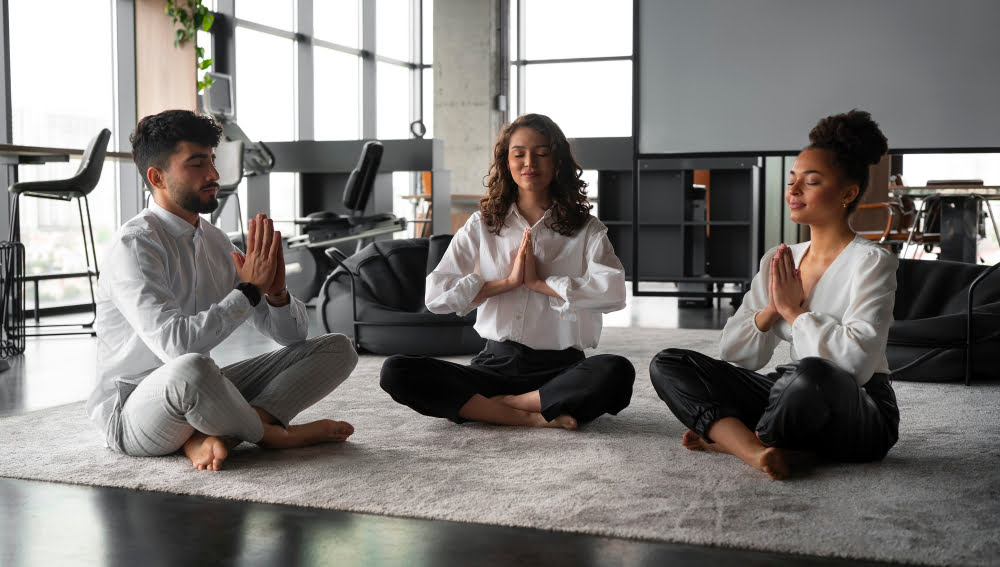
This skill involves several essential elements that contribute to a successful guided meditation session:
1. Knowledge of Meditation: Understand various meditation techniques, their functions, and how they influence the mind.
2. Clarity of Voice: Maintain a soft, soothing tone, clarity in pronunciation, and the right pacing. Occasionally, brief pauses can significantly aid in individuals’ internalization of the experience.
3. Structure: A well-defined structure in the session supports the guiding from the beginning, where the focus is on relaxation, moving gradually to a state of deeper concentration, and finally, easing back into normal consciousness.
4. Compassion: Sensitivity and understanding towards participants’ experiences and possible difficulties during the session.
5. Adaptability: Demonstrate flexibility in changing or adjusting techniques based on the needs of the group.
Remember, the goal is facilitating an internal journey for each participant, where they can explore their inner selves in a peaceful, supportive environment.
Planning and Rehearsing Guided Meditation

Planning for guided meditation includes choosing a theme, possibly linked to a specific need for relaxation or healing, and designing a flow that gradually guides participants into a meditative state. Consider the length of the session, creating a structure that allows ample time for each phase — easing in, maintaining deep relaxation, and gently drawing participants out of the meditative experience.
Rehearsing your guided meditation script is equally crucial. Familiarize yourself with the structure to ensure a smooth delivery without distracting interruptions. Practicing ensures your timing aligns with your planned structure and assists in cultivating a calm, reassuring voice tone, vital in creating a soothing environment conducive to meditative practices.
Next, consider these steps in preparation:
- Choosing a theme: This sets the tone for the session. The theme might center on promoting relaxation, decreasing stress or anxiety, or fostering a positive mindset.
- Creating a script: Prepare a detailed script that outlines the meditation process clearly. Use calming, positive language to relax and engage your audience.
- Structuring your session: A typical structure might include an introduction, relaxation, main meditation, and closing. This structure helps frame the session and keeps it organized.
- Rehearsing your script: This helps iron out any creases and develops confidence in your delivery. It also enables natural transitions between phases, aiding the participant’s relaxation and experience.
Remember, your overall goal is to guide each participant into a meditative state, where they can benefit from deep relaxation and inner peace.
Preparing the Environment for Guided Meditation
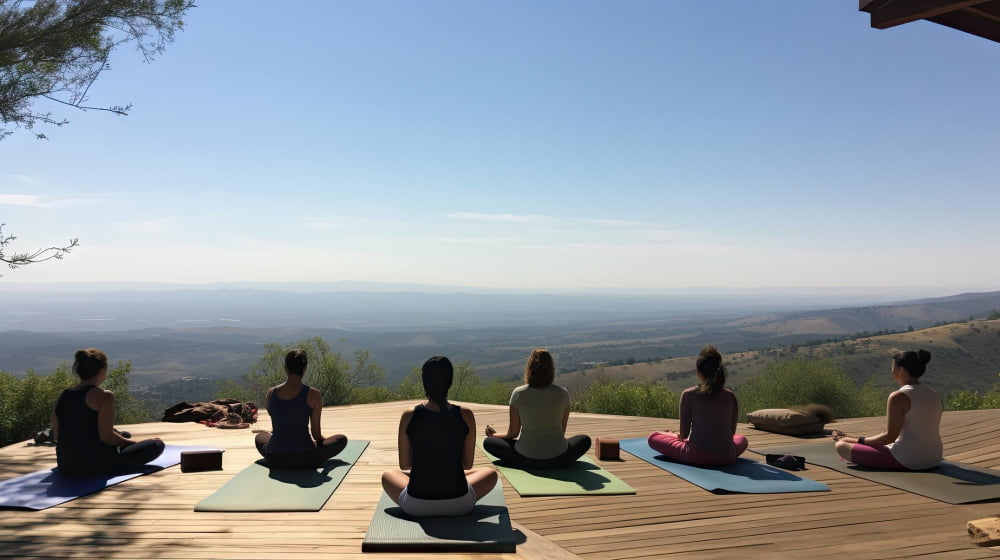
Creating an apt ambiance is a crucial step in conducting a successful guided meditation. Primarily, the place should offer comfort and tranquility, free from disturbances and distractions. Here are some pointers to prepare your meditation space:
- Choose a peaceful spot: Whether indoors or outdoors, ensure the place is tranquil and quiet enough for meditation.
- Ensure Comfort: Provide comfortable cushions or chairs. Ensure the room temperature is neither too hot nor too cold.
- Lighting: Soft, warm lighting can enhance the meditative mood. Consider using candles or dimmed lights.
- Declutter: A clean, organized space reflects a calm mind. Remove any potential distractions from the room.
- Nature Elements: Incorporate plants or a small indoor water fountain, as natural elements can enhance a sense of calm.
- Aromatherapy: Using essential oils or incense can further deepen the meditative experience, promoting relaxation and focus.
Each of these steps will help create an environment conducive to peace and introspection, setting the stage for an effective guided meditation session.
Incorporating an Introductory Talk for Guided Meditation
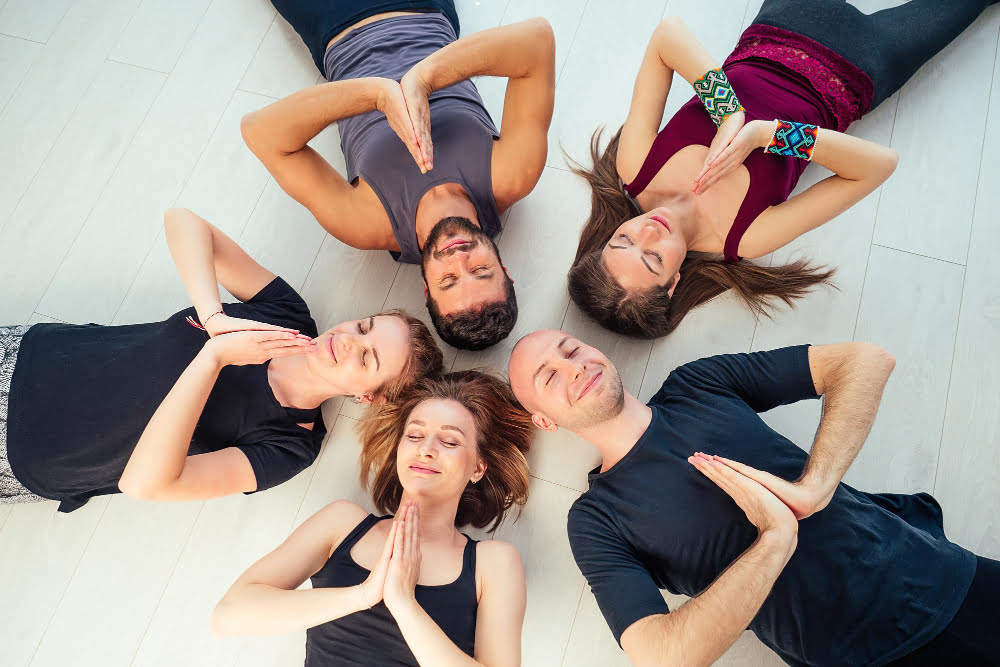
An effective preliminary discussion can really set the tone, ease any anxieties, and energize the process. When preparing your talk:
1. Clearly communicate what the participants can expect during the session, which can help create a safe and comfortable environment.
2. Share the purpose of this particular meditation, which can foster intention and align focus.
3. Clearly explain the nature of mindfulness and the ways it may benefit the participants in their daily lives.
4. Encourage participants to limit potential disturbances, such as turning off their phones, and guide them to find a comfortable sitting position.
5. Finally, provide simple, easy-to-follow instructions about the focus of attention, such as breathing, a word or phrase, or body sensation.
In this way, your introduction removes ambiguities and sets a clear direction for the beneficial journey to come.
Implementing Soothing Background Music in Guided Meditation

Background music plays a substantial role in setting the meditation’s ambiance and helping participants engage deeper into the process. Here are some key points to remember:
- Choose calming and slow-paced music: The rhythm should align with the slow, steady pace of breathing and the meditative state’s serene nature.
- Avoid lyrics: Songs with words can be distracting. Opting for instrumental music aids in inward focus.
- Opt for nature sounds: Sounds of rain, ocean waves, or a babbling brook can replicate meditation in tranquil surroundings.
- Maintain a low volume: The music is to facilitate meditation, not override the guide’s voice or the participant’s thoughts.
- Use a reliable audio device: Ensure your device doesn’t interrupt with ads or sudden shifts in volume.
By adhering to these considerations, you can create a melodious backdrop that uplifts the meditative experience.
Employing Progressive Relaxation Techniques in Guided Meditation
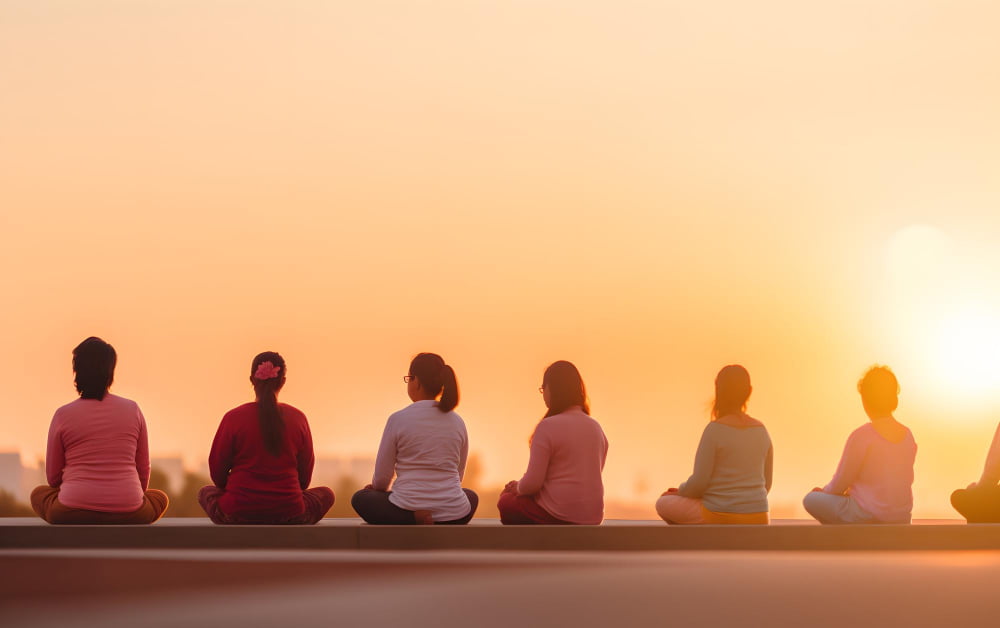
Progressive relaxation is a method of stress reduction that works by tensing and relaxing all the major muscle groups in the body in sequence. When appropriately applied during a guided meditation session, it can promote greater relaxation and deeper meditation.
Begin with the muscles in the feet and move up to the muscles in the head. Lead your participants in tensing their muscles for about five seconds and then relaxing them for 30 seconds.
Include specific instructions for each muscle group. For example, you might guide participants to “Curl your toes tightly as if grasping a small stone, hold it… now relax and feel the tension melt away.“
Use this technique at the beginning of the meditation session. This physical relaxation can prep the body for the mental relaxation and focus to come.
Guiding your practitioners in noticing the difference between tension and relaxation helps them understand their physical sensations better. This practice, over time, builds their capacity for mindfulness and body awareness.
Remember, not everyone will be comfortable with tensing and relaxing their muscles. Make sure to stress the importance of doing it only to the extent it feels right and to skip it altogether if it induces discomfort.
To build comfort and mastery in progressive relaxation, you can suggest practitioners to try it outside the meditation sessions, like before bedtime or during breaks at work or school. This reinforces the technique, making it more beneficial.
Keep the language simple and soothing, allowing participants to easily follow your instructions without feeling overwhelmed or distracted. By maintaining a calm and reassuring tone, you’ll pave the way for a more tranquil and immersive meditation experience.
Incorporating Visual Aids During Guided Meditation

Visual aids can significantly enhance guided meditation, creating a more immersive and relaxing experience. Here are the key points to consider:
1. Imagery: Utilize vivid imagery in your instructions for greater immersion. For instance, leading participants to ‘walk across a peaceful meadow’ or ‘float on a gentle sea’.
2. Non-verbal Cues: Along with verbal prompts, you can use non-verbal cues – such as peaceful imagery shown on a screen – to direct the participant’s attention and aid in visualizing serene scenarios.
3. Color Psychology: Make use of colors to influence mood. Each color has specific associations – for example, Blue signals peace and tranquility, yellow suggests happiness and positivity, and green denotes nature and restfulness.
4. Equipment: Consider using projectors or large screens to display serene and calm images, thus eliciting a sense of peace and tranquility during the meditation session.
5. Choice and Change: Remember, visual aids should be selected and changed in accordance with the progress of guided meditation to assist in transitioning between different peaceful scenarios. The images should be matched perfectly with your verbal cues for maximum benefit.
In utilizing these strategies, you create a more comprehensive meditation session for your attendees, enhancing their ability to visualize and enter a meditative state.
Generating a Relaxing Mood Throughout Meditation
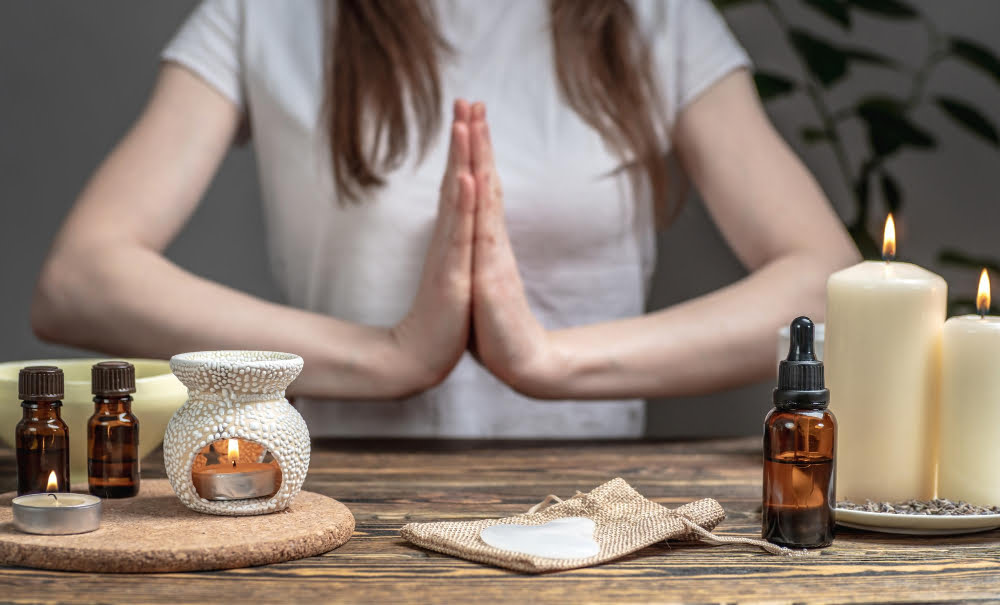
Keeping the environment tranquil is key when leading a meditation session. Soft, gentle light can help to create a peaceful atmosphere. Natural light sources are ideal, but if they aren’t available, consider using candles or dimmable lamps.
Adding scents into the mix can also enhance the calm sensation. Essential oils such as lavender and peppermint are often popular choices due to their stress-relieving properties. Try diffusing these oils in the room before the session begins.
Be mindful of temperature in the meditation space. A balance should be struck here; the room should not be too cold as it may distract the participants, but it similarly should not be too warm to induce sleep.
Making sure that every participant has a comfortable seating arrangement is another aspect to consider. A well-positioned meditation cushion or a chair, if necessary, will be greatly appreciated by the participants.
Lastly, silence holds immense power. Encourage everyone to switch off their electronic devices to eliminate potential disturbances. And as the facilitator, adopt a smooth, measured pace of speaking, letting your voice add an extra layer of calm to the surroundings.
Assisting Participants in Returning to Waking Consciousness After Meditation
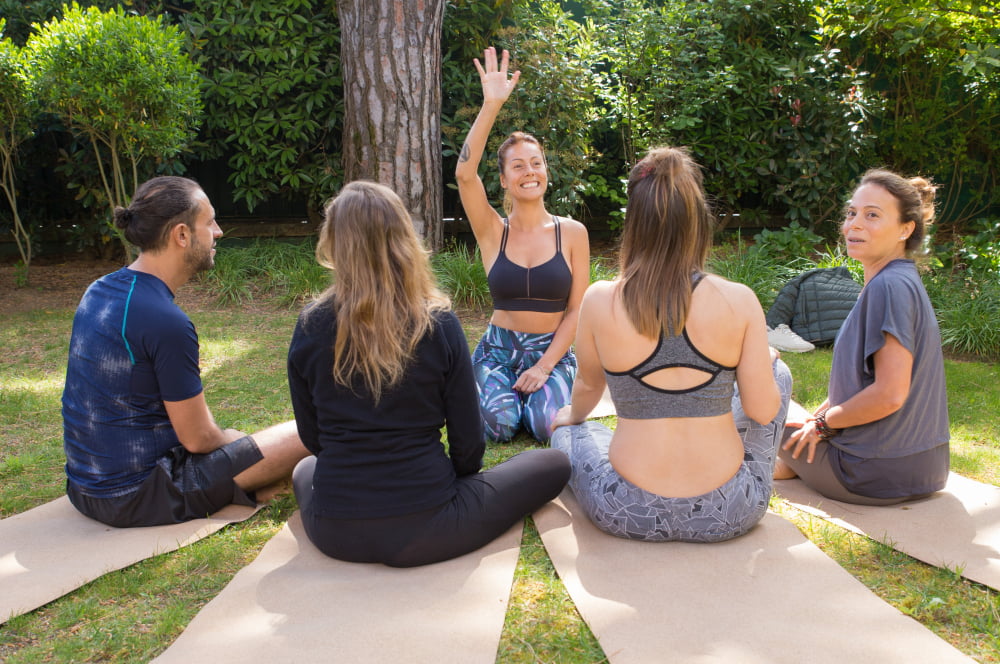
Gently guide participants back into wakefulness by gradually reducing the volume of your voice. A soft count from one to five is often used, signaling that five represents full alertness. Each count should be accompanied by a calming instruction, encouraging participants to become more aware of their surroundings.
Enhance this transition with cues to make slight movements. Suggest a wiggle of the fingers and toes or perhaps a gentle stretch. This helps reconnect the mind and the body, promoting a sense of re-energized unity.
Remind individuals to open their eyes slowly, readjusting to the light in the room to avoid any disorientation. They should be given a moment to sit in silence, honoring the peace and clarity they’ve achieved.
Finally, it’s essential to encourage participants to rise at their own pace. This is not a race; respect for personal space and time is paramount.
Remember, it’s common for some individuals to feel a bit disoriented or emotionally sensitive after a meditation, and this requires patience and understanding. With practice and right instructions, this phase can become effortless and therapeutic.
FAQ
Can anyone lead a guided meditation?
Yes, anyone can lead a guided meditation, however, it is advisable to have personal meditation experience for an effective understanding and guidance on the sensations and thoughts that participants might experience.
What do you say when leading in meditation?
When leading a meditation, encourage participants to focus inward, such as instructing them to feel the sensations of their breath, and guide their attention back if it strays.
How is guided meditation done?
Guided meditation is done by listening to a narrator or teacher who provides instructions about the dynamics of the mind and various meditation techniques, guiding you through the process.
How can one prepare to facilitate a guided meditation effectively?
To effectively facilitate a guided meditation, one needs to develop a deep understanding of meditation techniques, create a relaxed, quiet and visually soothing environment, structure a clear progression for the meditation, command soft yet clear and soothing voice, and cultivate a genuine ability to hold space for participants’ varying experiences.
What are the key elements to consider when structuring a meditation session?
When structuring a meditation session, consider key elements such as the environment, duration, meditation technique, mindfulness focus, and relaxation methodologies.
What techniques can be employed to engage participants during a guided meditation?
Employing visualization, guided imagery, sensory immersion, controlled breathing, body scanning, and mindfully describing the surrounding environment are techniques that can engage participants during a guided meditation.